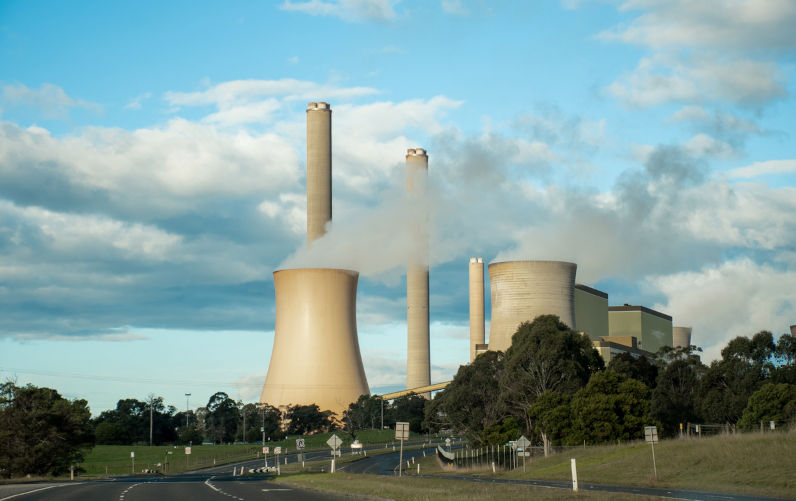Dutton’s stuff-ups: Nuclear plan will blow up Paris and emissions targets, CCA says
February 27, 2025
Choosing a nuclear power future over renewables will blow up Australia’s carbon emissions budget and create a carbon time bomb of up to two billion tonnes in extra greenhouse gases by 2050, a new analysis from the federal government’s Climate Change Authority says.
The analysis, released on Monday, poses a grim picture of what the nuclear future, as painted by Opposition Leader Peter Dutton and analysed in a controversial and contested Frontier Economics’ report in December, would look like from an emissions perspective.
Extra emissions from the electricity sector alone would spike by a cumulative one billion tonnes come 2050, and this number would double when adding emissions from a broader economy unable to use zero-carbon electricity.
Australia would miss its 82% emissions-free electricity target by more than a decade, reaching that target by 2042, and those emissions would also be consistent with global warming of 2.6ºC, rather than the 1.8ºC currently forecast for a renewables-led transition.
It will also ruin short-term targets, causing Australia to miss its legislated 43% national emissions reduction target for 2030 by more than five percentage points, and still not achieve this level of reduction by 2035.
The Coalition plans to build nuclear plants at seven sites across Australia for an estimated $331 billion over 25 years. The locations are all old or current coal power plant sites of Mount Piper and Liddell in New South Wales, Loy Yang in Victoria, Tarong and Callide in Queensland, Port Augusta in South Australia, and Collie in Western Australia.
Retaining coal fired power stations to hold space for the first nuclear generators, which would come fully online in the late 2040s, means the worst years for emissions will be 2034-2040.
The analysis compared the Liberal Party-commissioned Frontier Economics vision with that of the Australian Energy Market Operator’s step change scenario.
“Australia has to rebuild its electricity grid because coal plants are becoming ageing clunkers that need to be replaced ASAP,” Climate Change Authority chair Matt Kean told Renew Economy.
“What comes next is the fork in the road we are in the middle of. The market knows we are on a renewables road, supported by storage and where needed, gas. The Opposition has proposed a nuclear diversion, which provides a dramatic shift in momentum and direction.”
The former NSW Liberal treasurer says the choice as to which road Australia takes — nuclear or renewables — is now “imminent”, but the consequences of that choice can be estimated.
“We will find out soon what Australians think of this proposed change in direction for the country’s energy source. The RBA considers the pressures nudging prices up or down and it is the Climate Change Authority’s role to do the same for emissions,” Kean says.
Breaching commitments
The emissions bill from switching to nuclear means Australia will need to re-negotiate national and international commitments, including the legislated national target of reducing emissions by 43% by 2030.
Australia can’t meet this target, due in just five years, if it chooses nuclear as economy-wide emissions would be about 34 million tonnes higher in 2030 than under the current trajectory.
Instead, Australia would hit an emissions reduction below 2005 levels of just 37.1%.
New Paris Agreement targets for 2035 are due this year, although Australia has already formally missed the deadline to issue these and Opposition Leader Peter Dutton says while he wants to keep Australia in the global agreement, he won’t participate in the target-led pathway that it mandates.
“Modelling from the Climate Change Authority shows [Peter Dutton’s] nuclear scheme would massively drive up climate pollution and put Australia in breach of its own national law, and international law,” Climate Council chief executive Amanda McKenzie said in a statement.
“Mr Dutton himself has warned that failing to meet our global climate commitments would hurt our own economy and cost Australians jobs.
“Dutton’s risky nuclear scheme would burden our kids with more unnatural disasters, rising pollution and higher power bills. All Australians deserve a bright future. We need proven solutions like renewable power, backed by big batteries, that cut pollution now, not a reckless delay that locks us into climate catastrophe.”
Shifting responsibility
The volume of extra emissions from a nuclear future would force other industries to do the heavy lifting to try to meet Australia’s targets, the report says.
Options could include ratcheting up the Safeguard Mechanism settings or implementing stronger electric vehicle mandates.
But even with those on the table, removing electricity from the equation makes decarbonising the economy much harder and more expensive, as low-hanging fruit such as industrial heat pumps or all-electric mines and commercial buildings are no longer options.
Further, electricity supply in the National Electricity Market would be 24% lower in 2035 under a nuclear pathway than the current trajectory, as no new generation is built and coal fired power plants are kept out of retirement, creating costs around energy supply.
Those costs are estimated to be some $392 billion from extra emissions alone.
The current renewables-first energy transition has its own challenges and the nuclear debate is a distraction from focusing on ways to deal with these and other energy-related problems, The Australia Institute research director Rod Campbell said in a statement.
“We’re talking about nuclear yet again, not about Australia’s uninsurable regions, massive fossil fuel subsidies and dodgy offset schemes,” he said.
“It suits both major parties to have a fake fight about nuclear and avoid these real problems in Australia’s climate policy, on which Labor and Liberals largely agree.
“It would be more useful if the CCA focused on Australia’s subsidised fossil fuel expansion and rising domestic emissions.
“Nuclear is a distraction that avoids scrutiny of Australia’s real climate problems.”
Republished from RENEW ECONOMY, Feb 24, 2025
